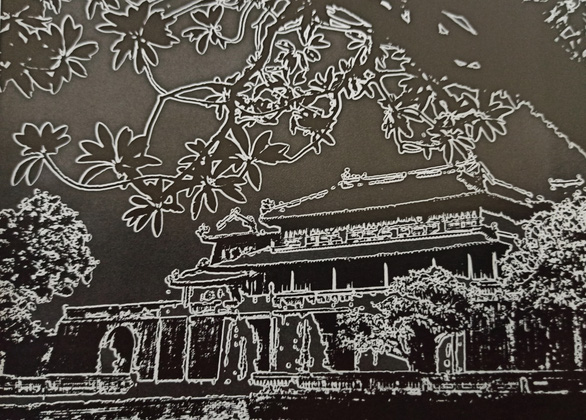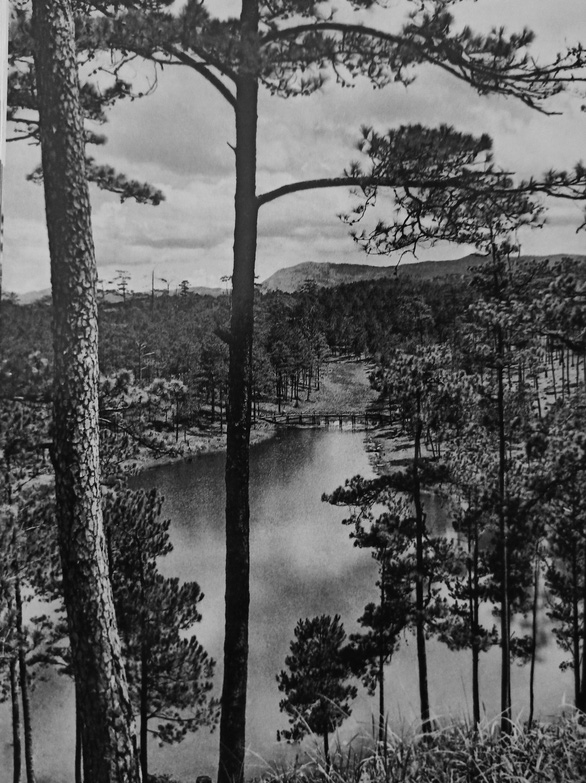Over 124 artworks showcasing the life and work of internationally-acclaimed Vietnamese photographer Nguyen Ba Mau are currently being shown at the Labor Culture House in the Central Highlands city of Da Lat.
The exhibition 'Nguyen Ba Mau Va Tac Pham' (Nguyen Ba Mau and Oeuvre) was opened on Sunday to mark the photographer’s 30th death anniversary.
It displays a large collection of works in 40x60 centimeter prints, a majority of which have never before been shown to the public.
The darkroom wizard
Mau was born on February 6, 1928 in Thap Cham Commune, an area rich in Cham historical and spiritual heritage sites in south-central Ninh Thuan Province.
He attended high school at Kim Yen Private School in the coastal city of Nha Trang, where his aptitude for art was revealed and nurtured by teacher Vo Thanh Diem.
In 1947, Mau moved to the upland town of Da Lat with his family.
Starting from an urge to capture the place’s natural charm, he picked up photography with a used Rollei camera and a few foundational guidebooks.
|
|
| A scene captured in Da Lat City. Photo: Nguyen Ba Mau |
|
|
| Cyclos in Da Lat. Photo: Nguyen Ba Mau |
Mau spent the majority of his youth discovering the landscapes and people of Da Lat from behind the lens.
During the process, he never failed to show his passion and exceptional commitment to practicing the art.
He also spent hours of his youth in the darkroom, honing his craft in photo post-processing.
Through the years, his body of work is rich with photo archives of famous landscapes from all over Vietnam, which he captured on road trips with his trusty Vespa scooter.
|
|
| 'Dang Ngoai' (Grandmother Posture), processed using split toning. Photo: Nguyen Ba Mau |
The master of split toning
Mau’s talent was made known to the world for the first time in 1968 thanks to his portrait photo 'Dang Ngoai' (Grandmother Posture), which won him massive acclaim from domestic critics as well as the Gold Medal at the 1969 Montesson Photography Salon Contest in France.
The photo was heavily processed using split toning, a technique that manipulates the highlights and shadows of a photograph into intended tints, which helped bring out striking contrasts and won over photography experts of the world.
After the blasting success of 'Dang Ngoai,' Mau obtained more than 30 awards with 12 of his works which display his splendid expertise in darkroom processing.
|
|
| 'Ngo Mon Hue' (Meridian Gate in Hue), processed with Sabattier effects (pseudo-polarization). Photo: Nguyen Ba Mau |
|
|
| Ho Than Tho (Lake of Sigh) in Da Lat. Photo: Nguyen Ba Mau |
Mau also made his mark in the history of the charming highland town with his timeless tours de force exhibitions, namely 'Hoi Tuong' (Nostalgia) (1969), 'Buoi Cho Ban Mai' (Market at Dusk) (1971), 'Nui Doi Mo Suong' (Mountain in Mist) (1972).
Throughout the 1960s and 1970s, prints and postcards of his work were highly sought after by tourists coming to Da Lat, selling some hundreds of copies per day.
Contemporary photographers in Vietnam and foreign countries alike refer to him as 'the king of split toning photography.'
|
|
| Nguyen Ba Mau is seen in this archive photo. |
With a career that spanned over four decades from the 1950s to 1980s, Mau left behind an extensive legacy in landscapes, architecture as well as street photography.
He was posthumously awarded the medal for Vietnam Literature and Art Career by the Vietnamese government in 2001.
Like us on Facebook or follow us on Twitter to get the latest news about Vietnam!
























































